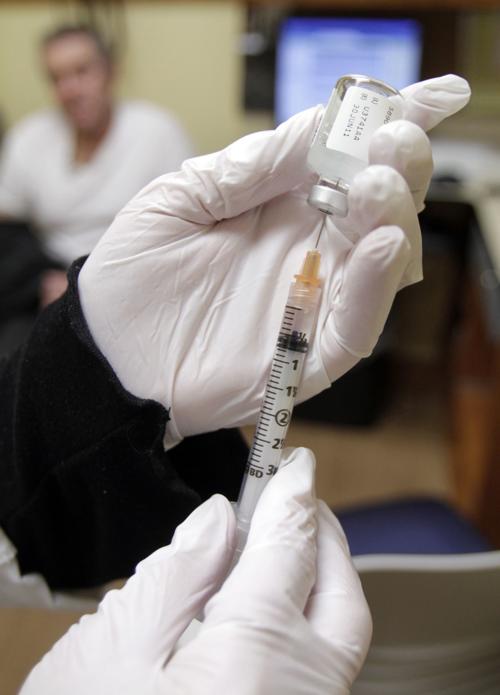Flu is on the rise in Pima County and across the state, but health officials stress that it’s never too late to get your vaccination.
The week of Dec. 2, the Arizona Department of Health Services reported 809 state-wide cases of flu. By Christmas week, a season total of more than 3,200 laboratory-confirmed flu cases were documented and flu activity was considered “widespread,” according to the health department.
The latest numbers are much lower than the nearly 11,000 cases reported during the same period last year, but are still more than the statewide five-year average of about 2,750.
The turning point occurred the week before Christmas, when flu activity levels jumped from “low” to “high,” according to the Centers for Disease Control and Prevention.
Pima County is nearly on par with its average number of flu cases for the last week of the year, but the rate of new cases has ticked up.
During the week of Dec. 16, 42 new cases of flu were reported in the county, which is lower than the five-year average of 66. But during the week of Dec. 30, 216 new cases were reported, outpacing the 156 average for the same period.
The total number of cases in Pima County at the year’s close was 417, just shy of the 427 average.
“The rate of increase in the number of cases tends to go up as the flu season kicks in and goes up for some time before leveling off and going down again,” said Dr. Kumar Dharmarajan, chief science officer of Clover Health, which conducts the monthly Flu Shot Monitor survey of 300 Tucson seniors over 60.
“Nationally, based on CDC data and trends, it does not look like the flu season has peaked. It will get more severe in the upcoming weeks,” Dharmarajan said.
Moreover, these numbers are just the tip of the iceberg, said Eugene Livar, interim chief for the Bureau of Epidemiology and Disease Control for the Arizona Department of Health. Not everyone with the flu goes to the doctor and not all flu cases are lab-tested.
The most vulnerable
The newborn to 18-year-old population is being hit hardest this flu season, according to national, state and county data. There have been no reported pediatric deaths in Arizona so far this season, although 13 children have died nationally from the flu.
Young people, 5 to 18 years old, comprise 33 percent of the cases in Arizona, Livar said.
The highest rates of hospitalization across the country are for children younger than 4 years of age. Adults 65 and older are the next most likely group to wind up hospitalized, according to the CDC.
According to the Clover survey, 68 percent of Tucson seniors received their flu shot so far.
“That is a slight improvement from last month’s 57 percent, but it still seems like one-third of Tucson seniors have yet to receive their flu vaccine and we know the season has started,” Dharmarajan said.
Additionally, Clover reported that seniors in rural communities are getting the flu shot at a lower rate than those in suburban and urban communities.
This trend is mirrored by state data that show the number of reported flu cases are much higher than average in Cochise, Santa Cruz and Pinal counties.
“Many factors impact the severity of flu season,” Livar said, including “how many individuals get vaccinated, the circulating strains in a community and the vaccine’s effectiveness,” which health officials are unable to determine until later in the season.
“Promotion of the flu vaccination is the best tool we have to battle against the flu besides everyday measures like washing hands, covering a cough or staying home when sick,” he said.
Getting the vaccine now will not only protect you for the rest of the season, but it will also lessen the symptoms if you do end up catching the flu. It will also protect those around you who can’t be vaccinated, such as infants under 6 months of age.





